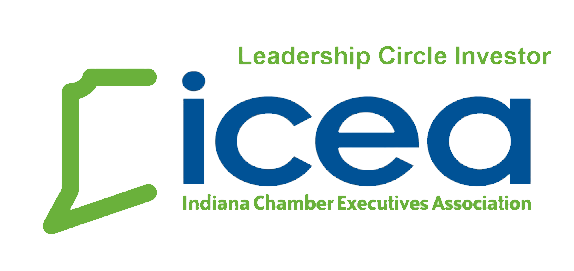Coffee with the County -The Workforce Iceberg
It was about a month after my daughter turned 2. I was driving down the highway with my kids in the back and my mom in the front seat, and out of the blue, I heard my 2-year-old begin counting: “One…Two…Free (because that’s how all two-year-olds say 3)...Four…” all the way to ten. I looked at my mom, and she looked at me. She exclaimed, “Did you know she could count?!” My quick reply: “No!” I was so excited to showcase my daughter’s newly learned skill to my husband that afternoon, who turned around and demonstrated it to her grandparents and great-grandparents. She could count!
Milestones in a child’s life are important, but the truth is, we had no part in this milestone. (Shoot, we didn’t even know she could do it!) We enrolled her in a local daycare/preschool program at the end of the summer, and the curriculum there is working–she’s learning new things every day, all while being in a place where we can keep her while we both work outside the home.
We are fortunate to have a place like her daycare (and those other babysitters and caretakers over the years) who take such great care of my kids, and teach them new things. The struggle, though, is that not every family is as fortunate. For instance, did you know that most daycares in our county (the few that we have in operation) have waitlists of families who are waiting to “get in”? On top of that, there is a high expense for childcare, and even then, it is a lean operation because costs are high. LaGrange County, like many rural communities across the state and country, are in a “childcare desert,” meaning that there are not enough “seats” (or openings) for children of working parents who need it.
If you’ve read my column long, you know that I talk about workforce development a lot. Many factors funnel into workforce development, and childcare is one of them. When parents can’t afford or access quality childcare, they may be forced to stay home, consequently hurting businesses and employers. It’s a vicious cycle.
Another factor that plays into workforce development is health. This is a loaded word and is connected to a plethora of segments: physical health (preventative and the management of), mental and emotional health (a growing “issue” that impacts our workers), and public health (the concept that social determinants affect an individual’s and a community’s health outcomes).
In the 2023 Indiana legislative session, a bill-turned-law was enacted from Senate Enrolled Act 4-2023. This effectively launched Health First Indiana, the state’s new program to pipe funds into local communities to identify, and then work towards amending any gaps or large issues facing the health of the public. This funding officially became available in 2024, and as of today, all 92 Indiana counties have opted in to receive these dollars. Specifically, these opportunities are installed to determine the health needs of our communities and implement evidence-based programs focused on prevention.
In LaGrange County, a Health First Indiana Coordinator was hired (Jackie Feller), and she has been working to grow in collaboration with other organizations and stakeholders who are effectively working to identify and provide solutions within the realm of public health.
A third “workforce development monster” is housing. I’m not sure that this topic will ever dissolve when it comes to community and economic development conversations. There will always be a need for housing, whether it is quantity, diversity, or affordability. All of these factors impact who lives here, and when it comes to identifying quality workforce, these factors must be addressed.
Sherri Johnston, the President and CEO of the LaGrange County Economic Development Corporation, has been a big player in the LaGrange County housing scene. Beginning in 2018, a housing task force was assembled to research and better understand the current landscape of LaGrange County housing. Through data-backed studies, it became clear that catalyst housing projects were needed–producing quality, diverse housing opportunities for the working class of our communities. These included plans for single-family homes, apartments, townhouses, and more.
One of the biggest challenges in housing development is always gap funding. What does this mean? In short, this includes the funding that is necessary to help a developer get to the finish line in offering these units. And in most scenarios, this gap is not shallow. Opportunities like READI (Regional Economic Acceleration and Development Initiative) and the Stellar Pathways, amongst other programs like a low-income housing tax credit initiative, could help to close that chasm.
As your LaGrange County Chamber of Commerce, we feel privileged to share the news of this work being done right here in our communities to impact our people and our employers. On Friday, November 15, at 9:00 AM in the Commissioners’ Room at the County Office Building, we will host our final Coffee with the County event of the year, featuring experts in these three segments of workforce development. They’ll share their insights, their work and history, and how these things impact our local economy and communities. We invite you to join us. The forum is open to all, and there is no cost to attend. We encourage you to register ahead of time on our website to help us plan for coffee and donuts.
At the end of the day, these three segments of workforce development are monumental and enormous, but LaGrange County is so fortunate to have people who are dedicated to the work involved. Not every community is lucky enough to have committed organizations like these. This is just the tip of the workforce iceberg; there is so much more to be done, and so much more that could be discussed. It takes all of us committing to the long-term impact of our communities, ensuring that LaGrange County is a great place to live, work, and enjoy for generations to come.
Did you know?
- Our Coffee with the County event registration can be found at www.lagrangechamber.org/events. We hope you’ll join us on November 15 at 9:00 AM!
- To learn more about each of the above-mentioned organizations and their work, you can visit their websites below:
- www.noblethriveby5.org
- www.in.gov/healthfirstindiana
- www.lagrangecountyedc.com
- Each of these topics was expanded upon in recent column editions. To read these, you can visit www.lagrangenewsonline.com and search for our column on the following dates:
- Childcare, Jenna Anderson, Thrive by 5: Sept. 4
- Public Health, Health First Indiana, Jackie Feller: Aug. 21 and 28
- Housing, LaGrange County EDC, Sherri Johnston: Oct. 9





